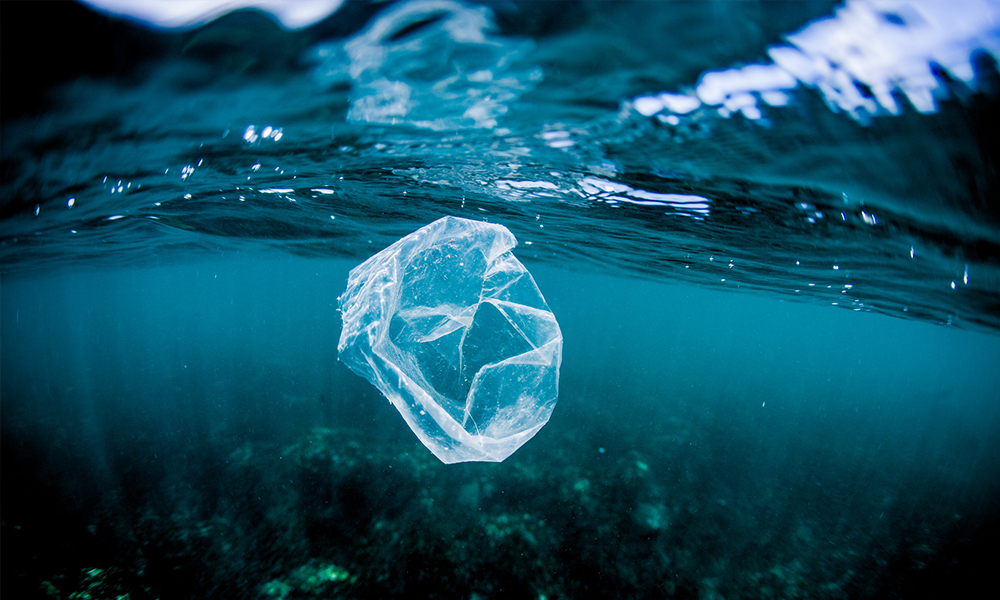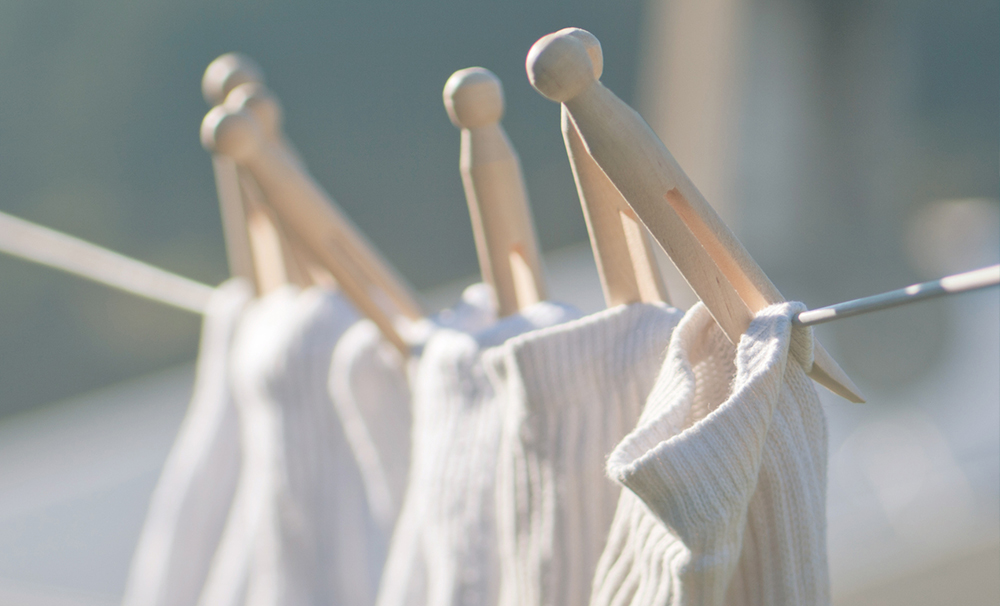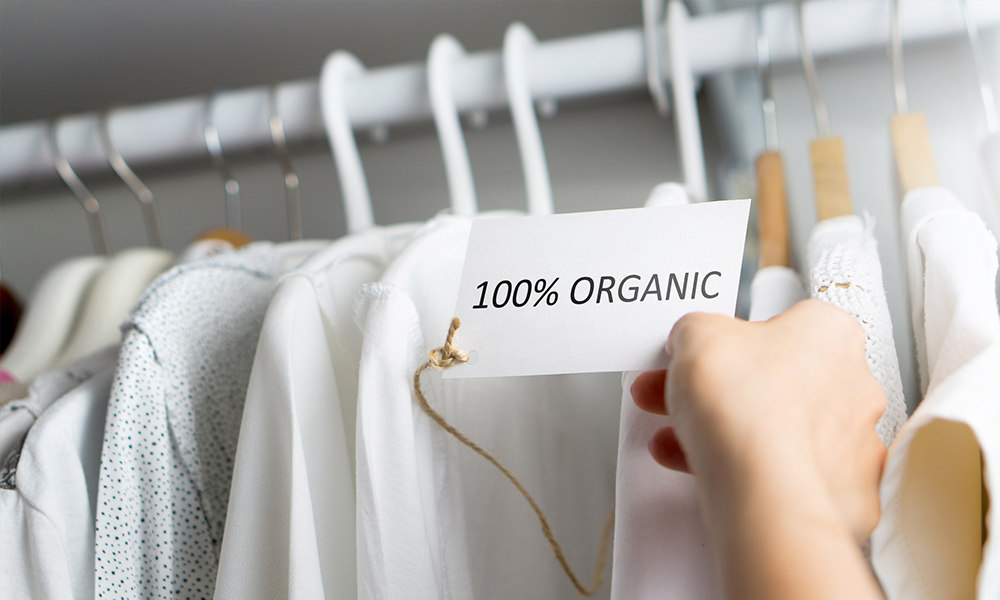The waste in your wardrobe
We’ve yet to wake up to the environmental costs of fast fashion.
Around a decade ago, Australian ecologist Mark Browne was examining the sediment of shorelines in various parts of the world, expecting to find fragments of plastic bottles and packaging. What he found instead were thousands upon thousands of microfibres – tiny fragments of polyester, nylon and acrylic. They accumulated around sewage outlets and, as it turned out, could be traced back to our washing machines. These fragments of plastic-based clothes were coming out in the wash, travelling through sewerage and storm-water systems and ending up in the sea.
Browne found the same on every shoreline he studied, in Oceania, Asia, Africa, Europe, North and South America. He estimated microfibres constituted around 80% of the man-made material found in the seas. Unsurprisingly, 10 years on, he’s frustrated everyone is still talking about plastic packaging and microbeads when we really need to talk about our clothes and microfibres.
You might think we could all just switch to non-plastic textiles, such as cotton, but cotton has its own environmental consequences, with the pesticides used and the volume of water needed to grow it. Browne is wary of claims that one textile is more environmentally sustainable than another; more research needs to be done to identify which are the most or least environmentally damaging, and what can be done to mitigate the problem. Until that’s happened, and the results have been published in scientific journals, we can assume one textile is as bad as another.

How often do we really need to wash our clothes?
You could at least wash your clothes less often. Seriously. Apparently over-washing is another symptom of our 21st-century excess. An Australian study got 30 participants to wear the same pair of jeans for three months, five days a week, without washing them; at the end of those three months, the researchers found the jeans didn’t even smell – and were able to scientifically prove it.
“We experienced first-hand that the jeans did not become socially challenging: they weren’t visibly dirty and they didn’t get smelly,” the lead author later wrote, arguing we need to “recode cleanliness standards”, which have more to do with marketing (of laundry products, appliances, etc) than matters of hygiene.
But we probably wouldn’t be over-washing if we didn’t have so many clothes to wash. Ladies and gentlemen, there are clearly too many clothes in the world.

There’s no such thing as a season anymore
If you’re of a certain age, you might remember the olden days, a couple of decades ago, when fashion revolved roughly around four seasons. Now we’ve got what’s called “fast fashion”, and 52 seasons in one year. That is, chain stores with faster production cycles, producing a massive volume of clothes sold with low margins. Consumers are encouraged to buy something as soon as they see it because they’ll never see that canary yellow, one-shouldered T-shirt again, and it doesn’t cost that much. They’ll wear it a few times and then throw it out.
It’s been estimated apparel production doubled between 2001 and 2014. As you’ll be aware, this is an industry that typically depends on outsourcing production to the world’s lowest-wage economies, where people work in conditions those in the West can’t imagine. Apart from the long hours and low wages, typical health risks experienced among workers (mostly women) in the apparel industry include dust and smoke inhalation, noise, lack of ventilation, musculoskeletal pain, eye strain, stress and exhaustion. Now, do you really want that canary yellow, one-shouldered T-shirt?
There is also plenty of evidence to indicate we should be sceptical – that manufacturers don’t always know what’s going on in the factories to which they outsource production.
Plenty of companies will claim they have an ethical approach to labour, but there is also plenty of evidence to indicate we should be sceptical – that manufacturers don’t always know what’s going on in the factories to which they outsource production. And if New Zealand fashion consumers are aware of some of the social costs of the contemporary fashion industry (which evidently isn’t putting them off buying lots of cheap clothes), they’ve yet to wake up to the environmental costs.
“People don’t realise the extent of fashion waste,” says Lisa McNeill, associate professor in the department of marketing at the University of Otago, who has a research focus on contemporary fashion consumption. She points out the fashion industry is thought to be the second most-wasteful industry in the world, behind the petrochemical industry – and we have only ourselves to blame. “The companies producing large volumes of cheap clothes are only producing what the market consumes,” she says. “If we weren’t consuming so much, they wouldn’t be producing so much. If we were prepared to pay a higher price for quality clothing produced under ethical conditions, that’s what they’d be producing.”

Want more, waste more.
New Zealand facts and figures are hard to find, but those coming out of the UK are alarming. WRAP, the UK resource efficiency programme, found that in 2011 people in the UK disposed of roughly 1.8 million tonnes of textiles, and 350,000 tonnes of it ended up in landfill. A survey commissioned by Sainsbury’s found in the spring of 2016 alone, Britons got rid of 235 million clothing items, to make room for summer clothes.
McNeill points to research that suggests people in developed countries have four to five times more clothes in their wardrobes than they did in the 1980s, yet most of the clothes are never worn. A survey conducted by Barnardo’s Retail in the UK of 1500 women aged over 16 found the majority of fashion purchases were worn only seven times.
This disposable approach to clothing has also been evident among McNeill’s research participants. Like the one who described how she and her friends had bought clothes specifically for a St Patrick’s Day party, each buying a pair of green jeans (for $8) and a green top (for $4). They wore them to the party, then threw them out. “I said, ‘Did you think about donating?’ and she said, ‘Who’s going to want to buy a pair of bright green jeans? They were hideous!’”
Social media is partly to blame.
Social media is partly to blame, she says. Another participant, a woman in her mid-20s, described how her wardrobe was filled with frocks she’d bought when she was 21, when she was going to a lot of 21st birthday parties. She didn’t want to appear on social media as the girl wearing the same frock at all her friends’ 21st parties, so she bought a different outfit for each one. “That’s a lot of expensive dresses,” says McNeill.
Consumers are waking up to this, at least in some parts of the world, with an emerging vogue for “eco-fashion”, “zero-waste fashion” or “green fashion”. Some designers are developing novel technologies, to make underpants from soya, polyester from recycled ocean plastics, clothes from cellulose produced by bacteria, and cruelty-free leather made in a lab. But they cost a lot to produce, and retail outlets aren’t yet convinced consumers care enough about the environmental cost of fashion to pay more for their clothes.
Can we trust companies claiming to produce ethical/sustainable fashion?
Brands such as Zara have recently launched so-called sustainable ranges, which include clothes made with organic cotton, recycled wool, or wood fibre sourced from sustainably managed forests.
“But research looking at Zara’s sustainable ranges found the consumers purchasing these goods had no concept that they were sustainable,” says McNeill. “They were buying them because they were in Zara and they liked that item of clothing. And those ranges only constituted 10% of Zara’s clothes. What’s the point of having sustainable ranges when 90% of stuff is the same old stuff produced the same old way?” Because you can then claim you’re producing sustainable fashion?

Sourcing alternatives? It’s complicated.
Viscose is often promoted as a sustainable alternative to cotton or polyester, but a report produced by the Changing Markets Foundation last year, which involved investigations of 10 manufacturing sites in China, India and Indonesia, uncovered water pollution from untreated contaminated waste, air pollution and, in some cases, severe health impacts on surrounding communities. Brands alleged to source from these factories included Inditex, which owns Zara. While the brands were transparent about where they sourced viscose textiles, the factories weren’t particularly transparent about their practices.
You could spend a lot time looking for sustainable fashion, but it’s complicated, confusing and time-consuming, and you still can’t be sure if it is what it says it is.
“I would think carefully about a company marketing itself as selling sustainable clothing,” agrees McNeill. “Clothing that’s made of plastics is often more sustainable in terms of its core energy values in production compared to cotton or viscose, which are natural fibres and sometimes thought of as more sustainable.
“If you look at food labelling, there are laws around what a food needs to be – to be labelled as organic, for instance. We don’t have those rules in fashion. There aren’t laws to say you must do things this way if it has this energy rating, like you need to with appliances. We could have an energy rating for fabric, in the way we can with an appliance.”
Not that she is advocating for such legislation, at least not yet. “This issue isn’t about sustainable fashion but about being sustainable consumers. We have to develop the ethos of consuming in a more sustainable way. It’s not about choosing particular fabrics. Everything has an environmental impact. It’s a volume issue.”

Mixed emotions on fashion resale.
Anecdotal evidence suggests some fashion-forward millennials are turning to op shops, perhaps motivated by green concerns, but probably because they don’t like the clothes in the chain stores and can’t yet afford designer clothes. This, of course, requires both the time and will to go through other people’s discards, and living in a town or city with op shops that have the kind of discards you’d be happy to go to work in.
Many of the same generation wouldn’t dream of it. As one participant in McNeill’s research said, “I’d never buy second-hand, but they can have my old clothes if they want them.”
McNeill sees more of a future in “collaborative consumption models”. Dutch company MUD Jeans sells pricey jeans made with recycled material, but also has a “Lease A Jeans” formula that allows people to rent jeans long-term. More locally we have Oh Rent Me and Designer Wardrobe, through which you can sell and buy “pre-loved” designer clothes, or rent them. Renting isn’t particularly cheap – Designer Wardrobe, for instance, has a number of fancy frocks, typically available for around $60 a week. Still, better that than buying a $400 frock and letting it waste away in your wardrobe.

Is sustainable fashion inherently oxymoronic?
“I would say there’s a distinction between fashion and trends,” says McNeill. “You throw away trend-based things. Fashion is something that endures. Compared to the 1950s, we’re spending less on fashion, but buying more of it. But back then, people were happy to buy one high-quality coat and wear it for 10 years. People aren’t happy to do that anymore.”
High-end designers, such as Stella McCartney, Eileen Fisher and Ralph Lauren, are currently promoting the concept of “slow fashion” – encouraging people to buy quality clothes, but less of them. As this was being written, a number of designers had set up a Slow/Shop pop-up in Ponsonby “to encourage consumers to buy quality products less often and support local creativity and really understand where our clothing and accessories come from”.
Fair enough. A well-made and beautifully styled frock or shirt or pair of pants is likely to last, to survive the vagaries of trend-based fashion, and you could argue be cost-effective over time. But there’s no guarantee they will, or that you’ll even fit any of them in a few years. And the price tag is still beyond the budgets of most people.
What do we do now?
However, enduring fashion doesn’t necessarily mean designer clothes, says McNeill. She suggests people go through their wardrobe, find the clothes they’ve had for a few years and still like to wear, and compare and contrast them with the clothes they don’t. “If an individual can identify what that difference is, it’s probably the key to actually changing your consumption habits and stopping you from buying what you’re only going to dispose of.
“We’re consuming much more clothing than we used to. We know that much of it’s produced in conditions that are not fair for those producing them. We know there are environmental costs.
“But it’s not about hunting down every bit of information about a company, or the clothes they produce… It’s about buying something you love and then looking after it, and wearing it for the next five years.
“And it’s about saying that [fast-fashion] product isn’t even worth $10, because the cost to the world is more than the joy you’ll get out of it for a week.”










